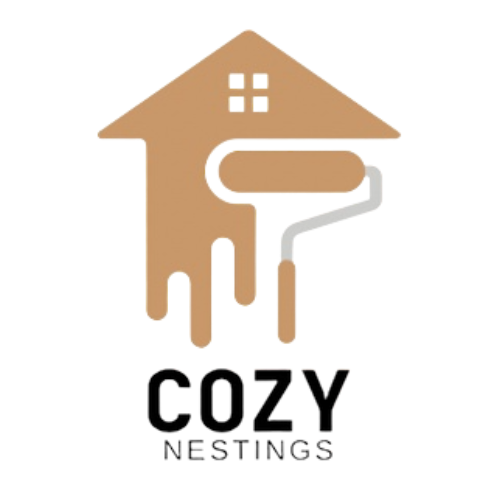Fixing a Bathroom Stall Door Latch: A Step-by-Step Guide
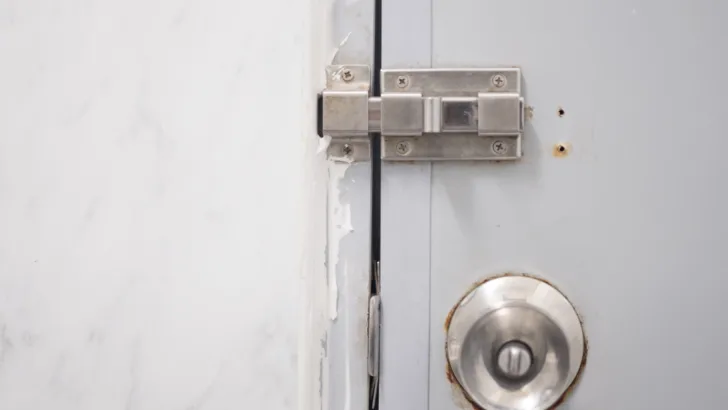
Step-by-Step Guide – Fixing a Bathroom Stall Door Latch
The Mystery On How To Fix Bathroom Stall Door Latch?
As a frequent user of public restrooms, I’ve encountered my fair share of broken stall door latches. It can be frustrating when you’re in a hurry and the door won’t close properly, or worse, won’t open at all. But fear not, with a few simple steps, you can fix a bathroom stall door latch yourself.
The most common issue with a bathroom stall door latch is that it becomes loose over time, causing the door to not properly latch shut. This can be caused by a variety of factors, including wear and tear, improper installation, or even vandalism. The good news is that fixing a loose bathroom stall door latch is a relatively straightforward process that can be accomplished with just a few basic tools.
Before you begin, it’s important to note that not all bathroom stall door latches are created equal. There are a variety of different types of latches out there, each with their own unique set of installation instructions. However, most latches can be fixed using the same basic steps. In the following sections, I’ll outline the steps you’ll need to take to fix a loose bathroom stall door latch, as well as provide some tips and tricks to make the process as easy as possible.
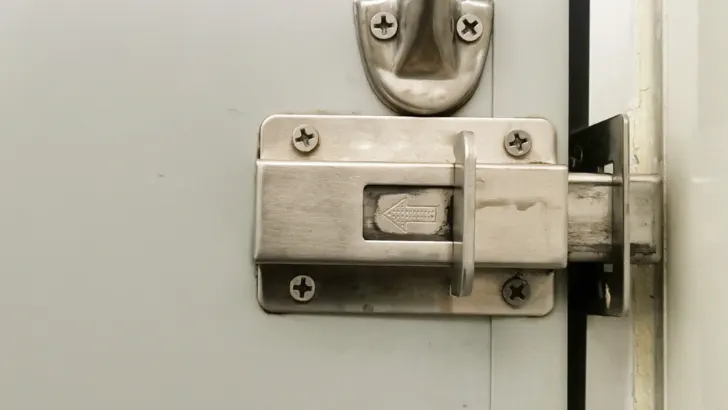
What Are The Different Types Of Bathroom Stall Door Latches Available
When navigating the realm of bathroom stall door latches, you’ll encounter a diverse array of options, each harboring its unique set of merits and drawbacks. The quest for the ideal latch to align seamlessly with your distinct requirements calls for careful consideration. In the forthcoming segment, I’ll delve into an in-depth exploration of the various types of bathroom stall door latches at your disposal. By gaining insight into their individual features and functionalities, you’ll be better equipped to make an informed decision tailored to your precise needs.
Slide Latch
Among the array of bathroom stall door latches, the slide latch stands as a prevalent choice. Characterized by a metal bar adeptly gliding into a designated slot, this latch offers a straightforward mechanism for door locking. Its prevalence in public restrooms is testament to its user-friendly nature. Yet, in the pursuit of comprehensive understanding, it’s vital to acknowledge potential shortcomings. Instances may arise where the slide latch presents challenges – opening could prove strenuous if the door is jammed or if the latch itself becomes misaligned. By delving into the intricacies of the slide latch, you’ll be equipped with the knowledge needed to weigh its convenience against potential obstacles.
Twist Latch – Exploring the Twist Latch: A Comprehensive Analysis
Amidst the spectrum of bathroom stall door latches, the twist latch emerges as a prevalent choice. Characterized by a knob that gracefully transforms with a twist, this latch offers a straightforward locking and unlocking mechanism. Its familiarity graces residential bathrooms, adding to its user-friendly allure. However, the twist latch harbors potential complexities that warrant attention. Instances may arise where its functionality encounters obstacles – the challenge of opening may arise if the door becomes stuck or if the latch itself undergoes misalignment. By delving into the nuances of the twist latch, you’ll be equipped with the insights needed to appreciate its ease of use while acknowledging potential hindrances.
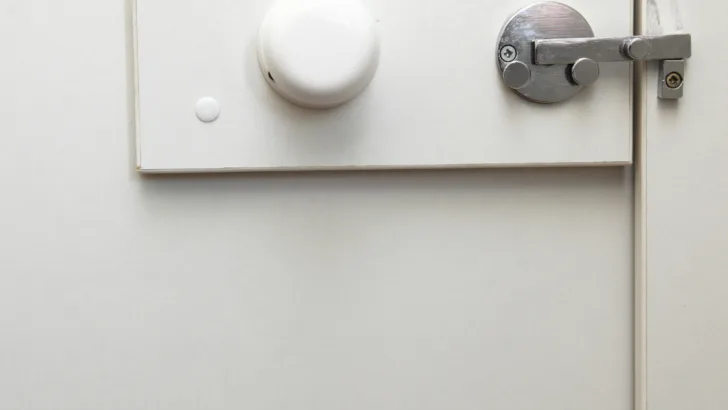
DIY Bathroom Stall Door Latch Repair
Occupancy Indicator Latch – Navigating the Occupancy Indicator Latch: A Comprehensive Exploration
Within the realm of bathroom stall door latches, the occupancy indicator latch emerges as a distinctive contender. Distinguished by its innovative design, this latch incorporates a sliding indicator, serving as a silent communicator of a stall’s occupancy status. Its presence is most prominent in public restrooms, effectively averting potentially uncomfortable situations.
While its utility is undeniable, the occupancy indicator latch does present certain challenges. Its installation can prove to be more intricate when compared to its counterparts, demanding a closer look at its mechanics. Through this comprehensive examination, you’ll gain a deeper understanding of the occupancy indicator latch’s value in public facilities, while also acknowledging the considerations involved in its installation.
Deadbolt Latch – Exploring the Deadbolt Latch: A Closer Look
In the realm of bathroom stall door latches, the deadbolt latch stands out as a robust and secure option. Characterized by its bolt mechanism that precisely slides into a slot to secure the door, this latch prioritizes enhanced security. Its application is commonly found in environments that demand heightened safety measures, including locations like prisons or mental health facilities.
However, while the deadbolt latch offers superior security, its operation may present certain challenges. Its complexity could make it more intricate to use compared to other latch types. By delving into the intricacies of the deadbolt latch, you’ll gain a deeper appreciation for its role in safeguarding high-security areas, along with an understanding of the nuances associated with its usage.
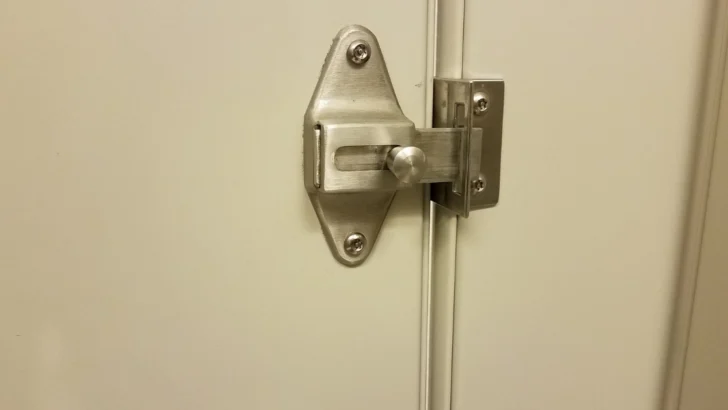
Expert Tips for Fixing Bathroom Stall Door Latch Issues
Concluding the Exploration of Bathroom Stall Door Latches And How To Fix Bathroom Stall Door Latch
To wrap up our journey through the world of bathroom stall door latches, it’s clear that a variety of options exist, each presenting its unique set of pros and cons. The task at hand is to select the latch that best aligns with your individual requirements and the desired level of security. As you embark on the decision-making process, remember to factor in your specific needs, allowing them to guide you toward the ideal latch choice. By delving into this diverse array of latch types, you’re empowered to make an informed decision that ensures both functionality and security for your bathroom stalls.
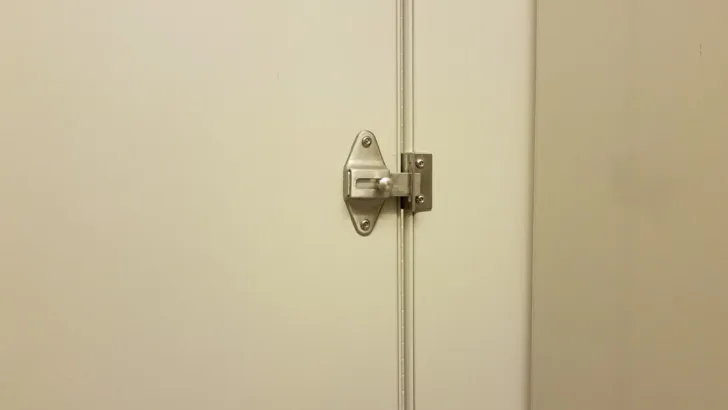
Latch Restoration – Bringing Your Bathroom Stall Door Back to Functionality
The Importance Of Checking The Latch Mechanism For Damage Before Attempting To Fix It
Before attempting to fix a bathroom stall door latch, it is important to check the latch mechanism for any damage. This step is crucial because attempting to fix a damaged latch can cause further damage to the mechanism, and in some cases, it may not be fixable at all.
The latch mechanism can be damaged in a number of ways. It can become rusted, corroded, or bent due to frequent use or exposure to moisture. If the latch is not working properly, it can cause the door to stick or not close securely, which can be a safety hazard.
To check the latch mechanism for damage, I start by examining the latch itself. If the latch is bent or corroded, it may need to be replaced. If the latch is in good condition, I move on to the strike plate. The strike plate is the metal plate that the latch clicks into when the door is closed. If the strike plate is misaligned or damaged, it can cause the latch to not click into place properly, resulting in a door that won’t stay closed.
In addition to the latch and strike plate, I also check the screws that hold the latch and strike plate in place. If the screws are loose or missing, the latch and strike plate may not be held in place securely, causing the latch to not work properly.
Overall, checking the latch mechanism for damage is an important step in fixing a bathroom stall door latch. By taking the time to identify any damage, I can ensure that the latch is fixed properly and that the door is secure and safe to use.
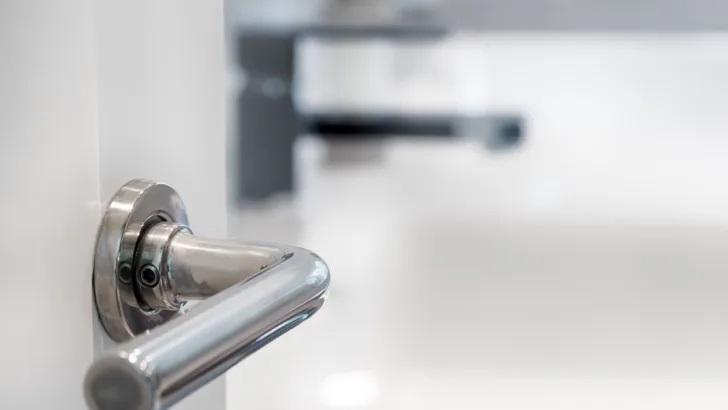
Unlocking Solutions – Repairing Bathroom Stall Door Latch Problems
Navigating the Art of Repairing a Bathroom Stall Door Latch
Drawing upon my experience as a resourceful individual, I’ve acquired the skills to effectively address issues with a misbehaving bathroom stall door latch. Allow me to share the systematic approach I adopt to rectify such situations:
Equipped with My Tool Box, Gather Your Tools
Initiating the repair process, I begin by assembling the necessary tools. To ensure a seamless operation, I reach for a Phillips screwdriver and secure a replacement latch mechanism as my essential companions. With these tools at the ready, I’m prepared to undertake the task at hand:
Locating the Heart of the Issue – The Latch Mechanism
Continuing my repair journey, I shift my focus to identifying the pivotal component – the latch mechanism. With precision, I navigate the interior of the door, directing my attention just above the knob where the latch mechanism resides. This step sets the stage for the upcoming restoration process.

Get Your Bathroom Stall Door Latch Back in Working Order
Remove The Screws That Secure The Latch Mechanism In Place – Unveiling the Inner Workings
My trusty Phillips screwdriver takes center stage once again as I embark on the task of liberation. With a deft hand, I carefully remove the pair of screws that stand guard, steadfastly securing the latch mechanism in its place. This meticulous act of detachment unveils the inner workings, paving the way for the next phase of rejuvenation:
Carefully Remove The Latch Mechanism From The Door Frame – Delicate Extraction
With the screws no longer restraining its hold, the latch mechanism awaits liberation from its abode within the door frame. A gentle touch guides its gradual departure, ensuring a harmonious separation that leaves the door frame and the latch mechanism unscathed. The utmost care is taken to preserve the integrity of both, a testament to the precision and diligence that define my repair journey.
Inspect The Latch Mechanism For Damage – Thorough Examination
With the latch mechanism now in my hands, I embark on a meticulous inspection, scouring its components for any signs of wear, damage, or dysfunction. Each element is scrutinized, every detail observed, as I seek to unravel the mystery behind the latch’s ailment. Should the verdict point to damage, a seamless transition ensues as a new latch mechanism steps in to take its rightful place, ensuring the door’s future security and functionality.

Bathroom Stall Door Latch Fixes Made Simple
If The Latch Mechanism Is Not Damaged
In cases where the latch mechanism stands strong, free from any wear or tear, my attention shifts towards a nurturing approach. I delicately cleanse the mechanism, ridding it of accumulated grime and ensuring a pristine surface. A gentle application of a silicone-based lubricant follows, rejuvenating its internal workings with a touch of smoothness. With care, I reintroduce the revitalized latch mechanism to its home within the door frame, securing its position with the familiar embrace of screws.
Once The Latch Mechanism Is Fixed Or Replaced – Evaluating the Outcome
With the latch mechanism duly tended to – either revitalized or replaced – I proceed to assess its impact. A gentle nudge and the door responds with newfound grace, its motion flowing seamlessly. Yet, should any hint of resistance persist, I pivot my focus to the hinges and the strike plate. Ensuring the alignment of these essential components, I fine-tune their coordination, guiding the door toward effortless operation. In the symphony of this restoration, harmony is my guide, and the door’s fluid dance is the ultimate testament to a job well done.
Fixing a bathroom stall door latch is an easy process that can be done with a few simple tools. By following these steps, anyone can fix a bathroom stall door latch and avoid the frustration of a stuck door.
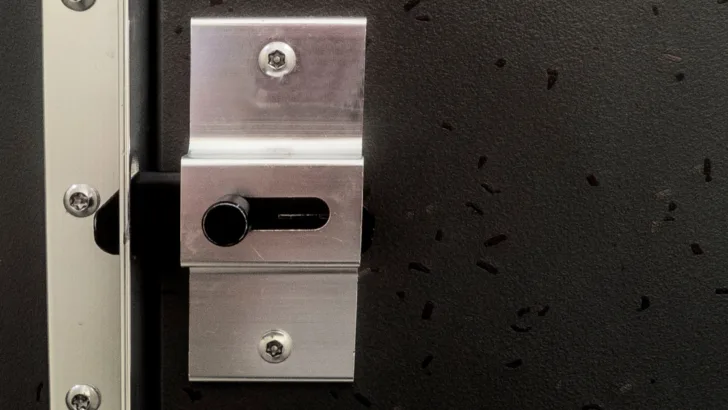
Restoring Functionality – Repairing a Faulty Bathroom Stall Door Latch
Tips For Preventing Bathroom Stall Door Latches From Breaking
Drawing from my own experiences of diligently tending to a multitude of bathroom stall door latches, I understand the exasperation that accompanies their untimely breakdowns. Yet, fear not, for there exists a realm of simple measures that can be embraced to fend off such inconveniences. Allow me to impart my acquired wisdom, offering you a selection of strategies that will safeguard the functionality of your bathroom stall door latches. These insights serve as a shield, preserving the tranquillity of your restroom encounters and averting the vexation of latch malfunctions.
Use The Latch Gently
An invaluable nugget of wisdom gleaned from my encounters with bathroom stall door latches is the significance of treating them with tender care. The oft-overlooked truth is that excessive force can be the harbinger of their undoing. By adopting a gentle approach, you can safeguard these modest yet pivotal mechanisms from bending or snapping under pressure. My personal recommendation is to employ just the right amount of force required for the task at hand—no more, no less. Eschew the temptation to yank or tug vigorously, and in doing so, you grant your latch the grace it deserves to serve you faithfully.
Keep The Latch Clean And Free Of Debris
In my journey of unraveling the intricacies of bathroom stall door latch functionality, I’ve come to recognize the pernicious role that dirt and debris can play. A culprit often overlooked, the accumulation of dust, hair, and assorted particles can gradually infiltrate the latch mechanism, resulting in unwelcome jamming or sticking. To shield your latch from such woes, I advocate for a regime of cleanliness and vigilance. A simple act, such as wiping it down with a damp cloth, can work wonders in preventing buildup. Alternatively, employing a small brush can help expel any encroaching debris, ensuring your latch operates seamlessly for times to come.
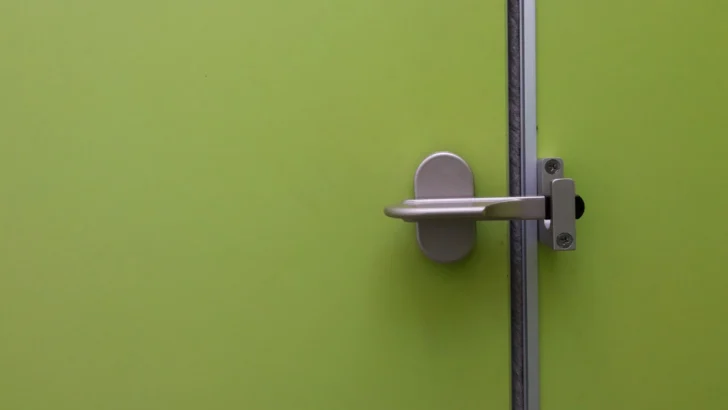
Hands-On Guide – Fixing Your Bathroom Stall Door Latch
Lubricate The Latch Mechanism Regularly
Sustaining the harmonious rhythm of your bathroom stall door latch demands a touch of tender care. Regular lubrication emerges as a cornerstone in this endeavor, ensuring that the mechanism glides effortlessly. Drawing from my experience, I advocate for the use of a silicone-based lubricant, a choice that steers clear of attracting dirt or dust, unlike its oil-based counterparts. A simple ritual, every few months, involves applying a modest quantity of lubricant to the latch mechanism. This gesture of care will extend the longevity of your latch’s seamless functionality, allowing it to perform its duty with grace and ease.
Replace The Latch Mechanism If It Is Damaged Or Worn Out
Finally, if your bathroom stall door latch is damaged or worn out, it’s important to replace it as soon as possible. Continuing to use a broken or worn-out latch can cause further damage to the door or the latch mechanism itself. If you’re not sure how to replace the latch, I recommend consulting a professional or referring to the manufacturer’s instructions.
By following these simple tips, you can help prevent bathroom stall door latch failure and keep your bathroom stalls in good working order. Remember to use the latch gently, keep it clean and free of debris, lubricate it regularly, and replace it if it’s damaged or worn out.

Practical Solutions for Bathroom Stall Door Latch Repair
Resources
- HomeAdvisor (https://www.homeadvisor.com/)
- DIY Network (https://www.diynetwork.com/)
- Instructables (https://www.instructables.com/)
- The Family Handyman (https://www.familyhandyman.com/)
Frequently Asked Questions
How can I fix a bathroom stall door that won’t latch properly?
If your bathroom stall door won’t latch properly, there are a few things you can try to fix it. One of the first things you should check is whether the latch is mounted properly. If the screws are loose, tighten them up and see if that solves the problem. If the latch is mounted properly, you may need to adjust it. Try moving the latch up or down to see if that helps.
What is the best way to repair a bathroom stall door latch?
The best way to repair a bathroom stall door latch depends on the specific problem you’re having. If the latch is loose, you may need to tighten the screws or adjust the latch. If the latch is broken, you may need to replace it. In general, it’s a good idea to start by inspecting the latch to see if you can identify the problem.
Why won’t my bathroom stall door latch?
There are many reasons why a bathroom stall door might not latch properly. Some common causes include loose screws, a misaligned latch, or a worn-out latch. If you’re having trouble figuring out why your bathroom stall door won’t latch, try troubleshooting the problem by inspecting the latch and checking for loose screws.
How do I troubleshoot a bathroom stall door latch?
To troubleshoot a bathroom stall door latch, start by inspecting the latch to see if it’s mounted properly and if the screws are tight. If the latch is mounted properly and the screws are tight, try adjusting the latch to see if that helps. If you’re still having trouble, you may need to replace the latch.
What are some common problems with bathroom stall door latches?
Some common problems with bathroom stall door latches include loose screws, a misaligned latch, a worn-out latch, or a broken latch. These problems can cause the latch to not latch properly, making it difficult to close and lock the bathroom stall door.
What tools do I need to fix a bathroom stall door latch?
To fix a bathroom stall door latch, you’ll typically need a Phillips screwdriver, pliers, and possibly a replacement latch. If you’re not sure what tools you’ll need, start by inspecting the latch to see if you can identify the problem. Once you know what’s wrong, you can gather the tools you need to fix it.
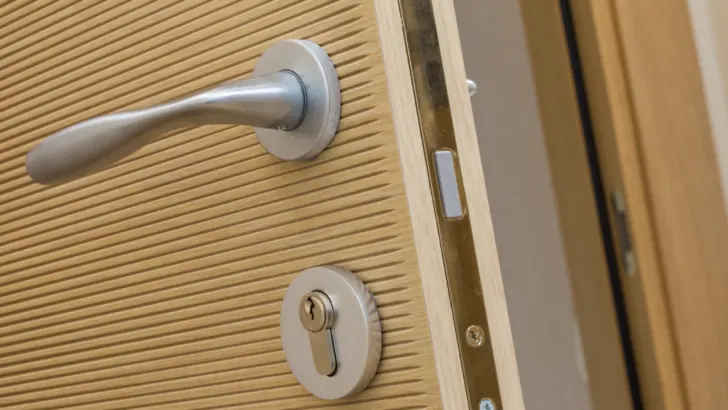
Mastering Bathroom Stall Door Latch Restoration
